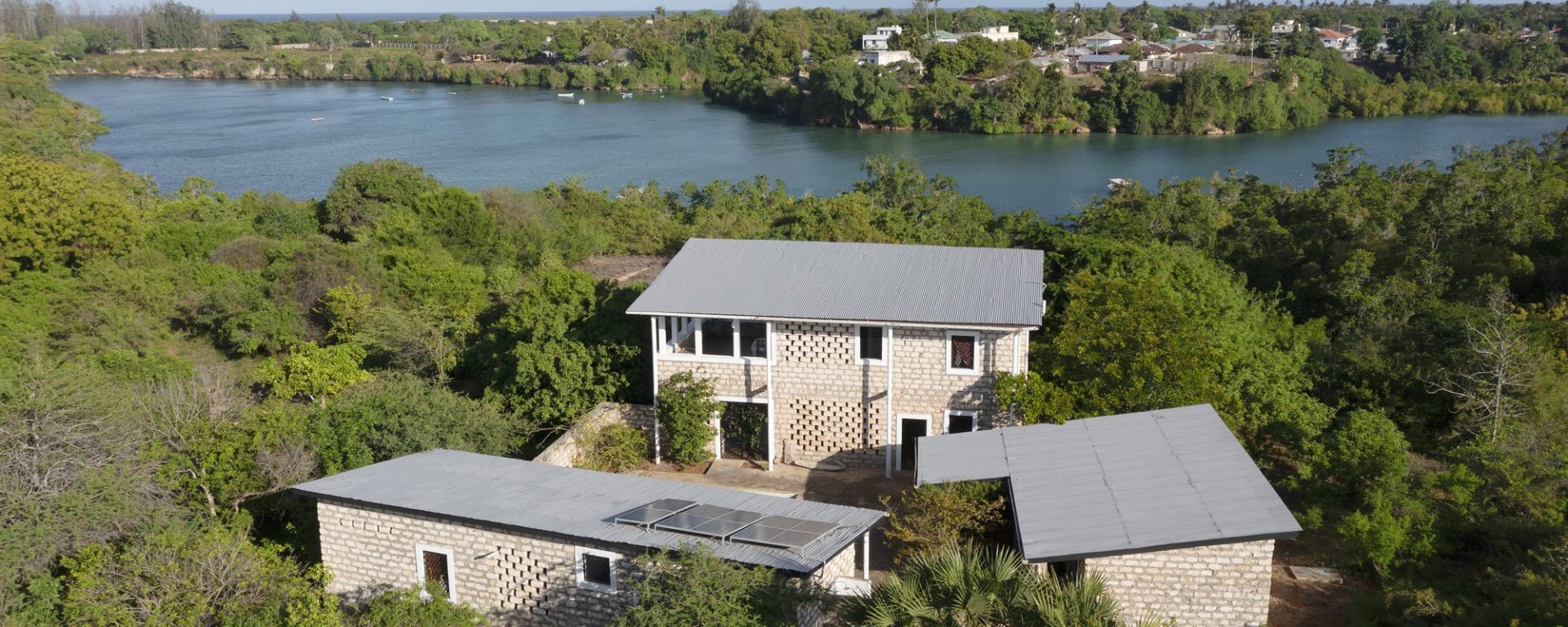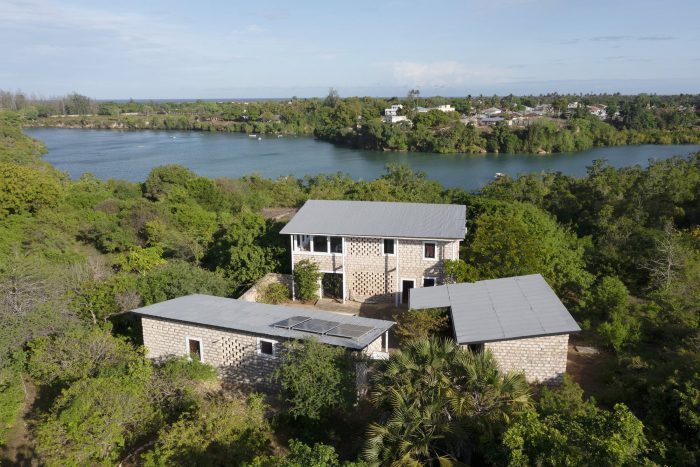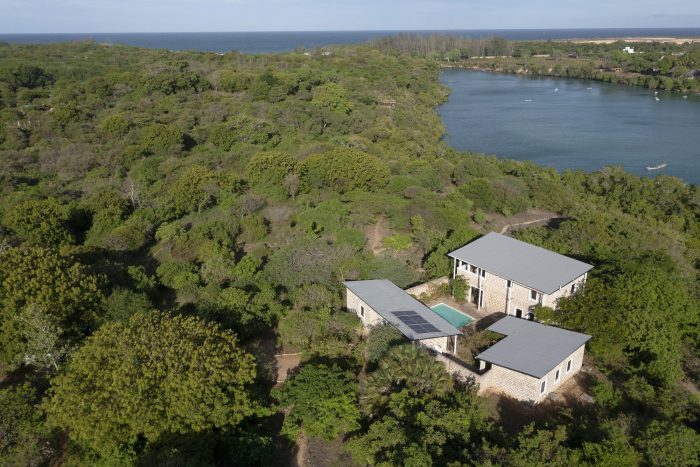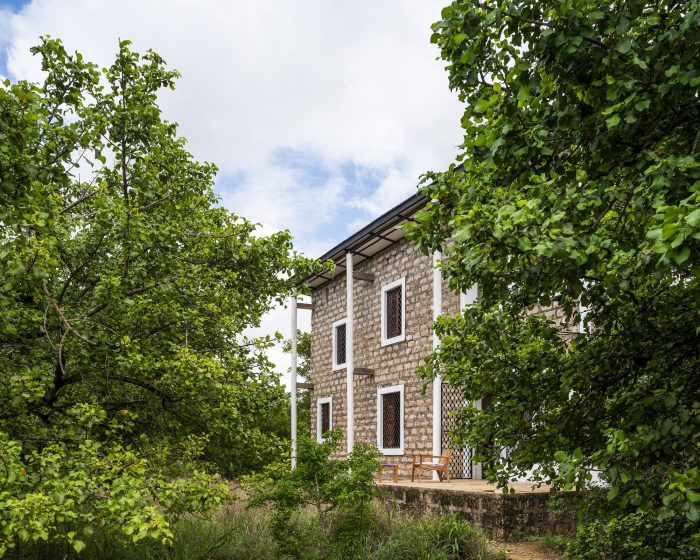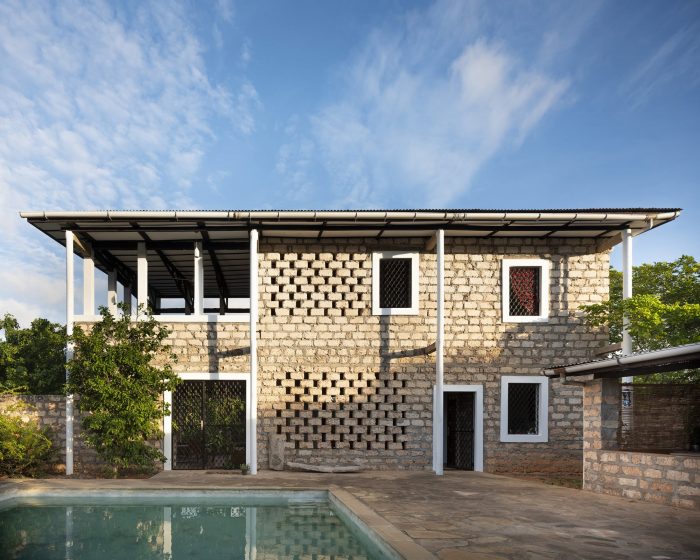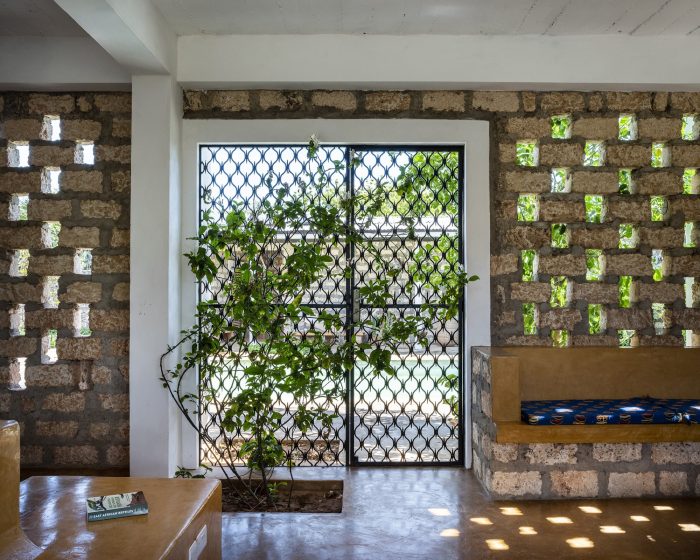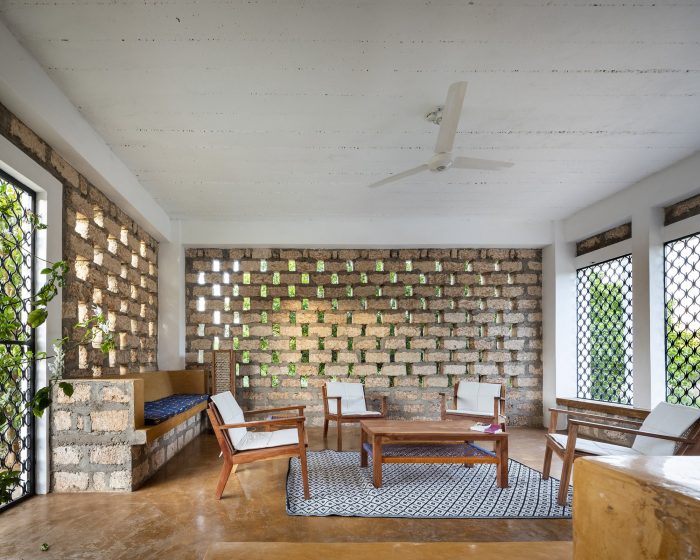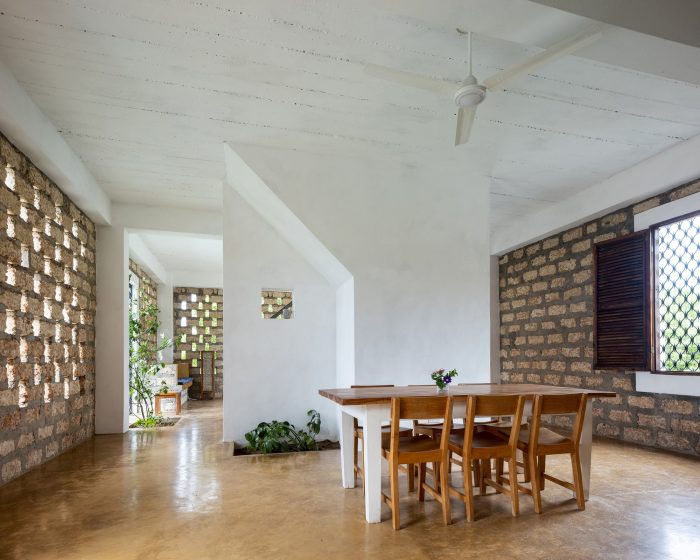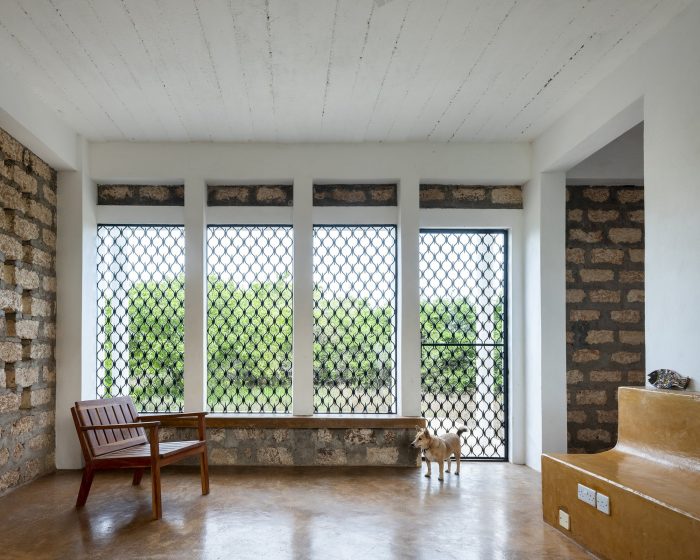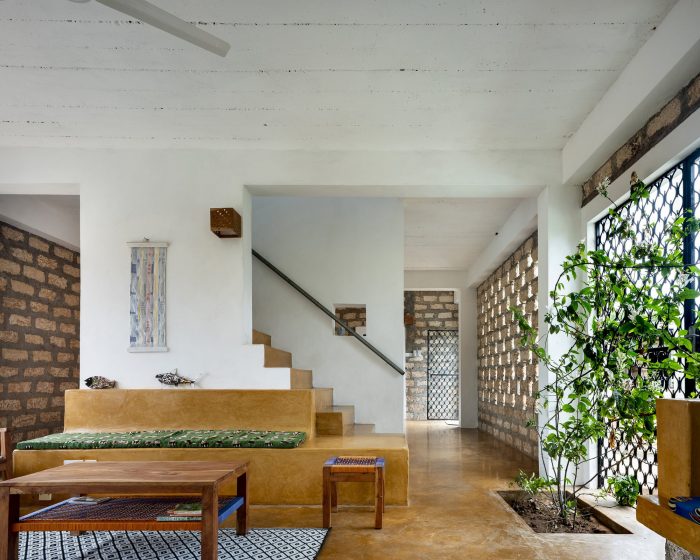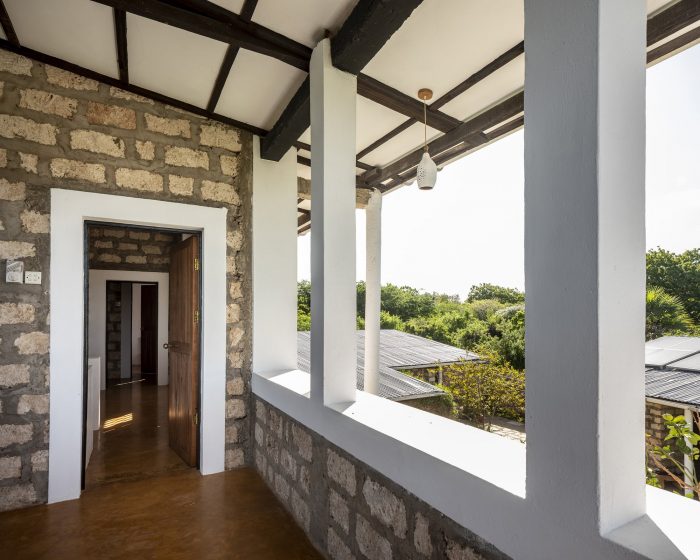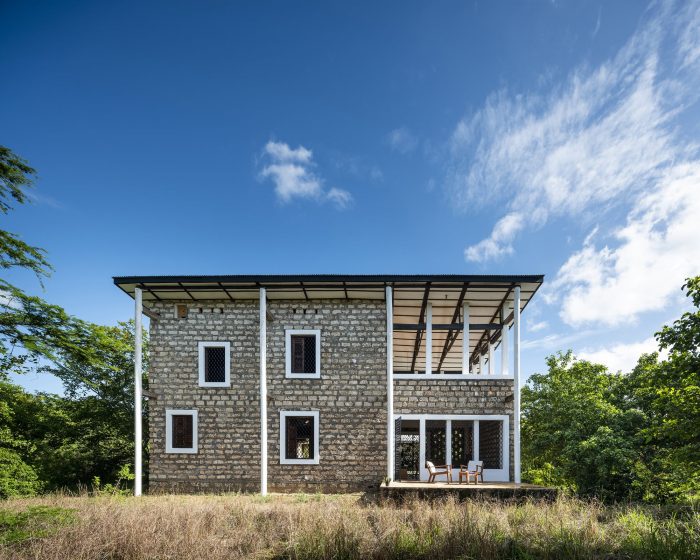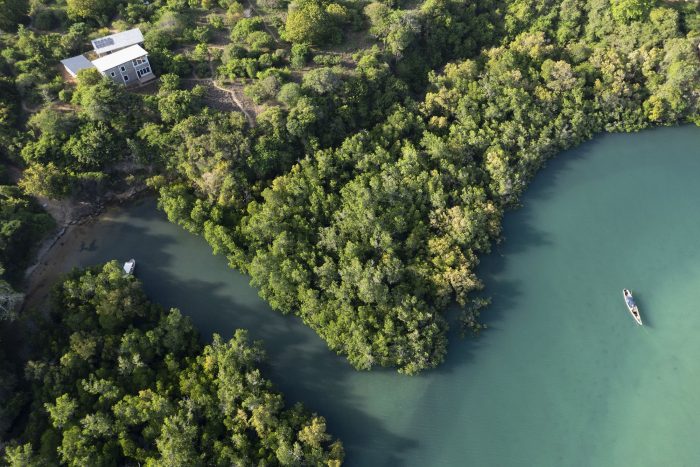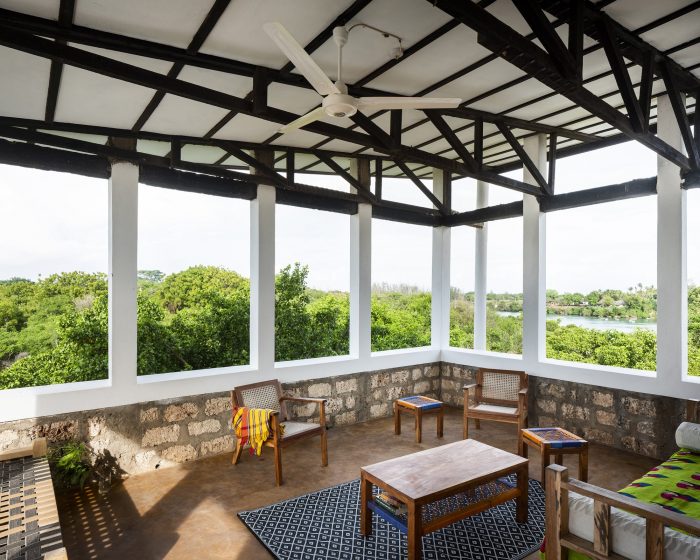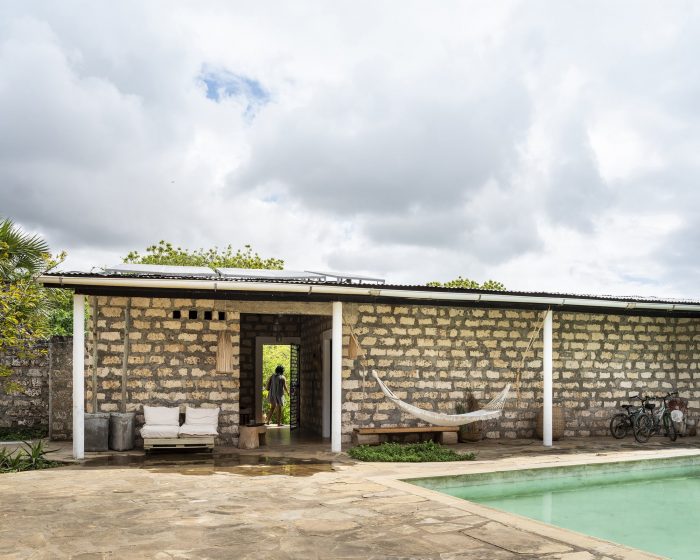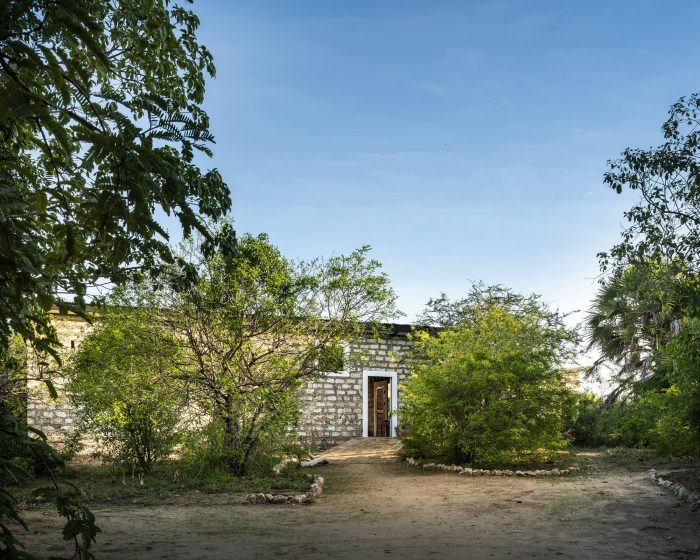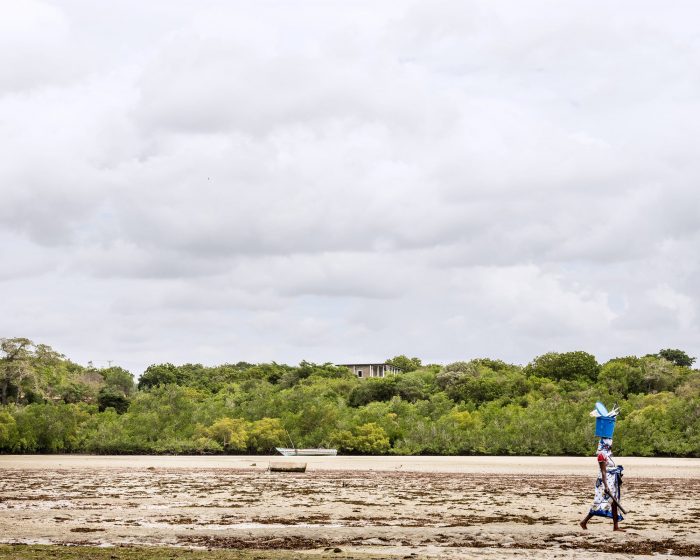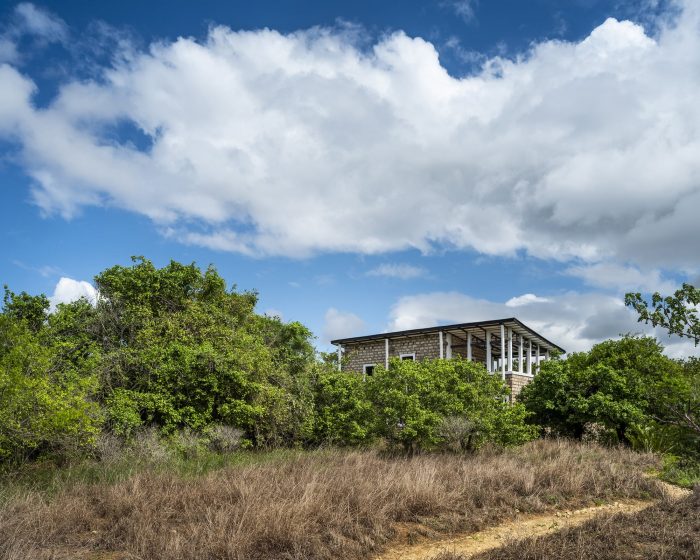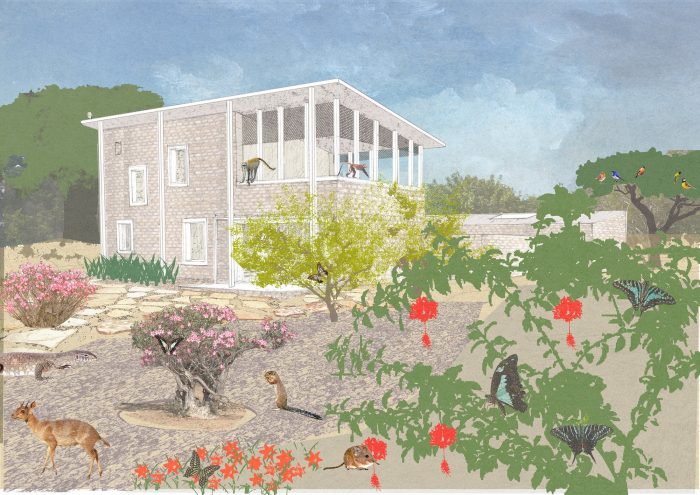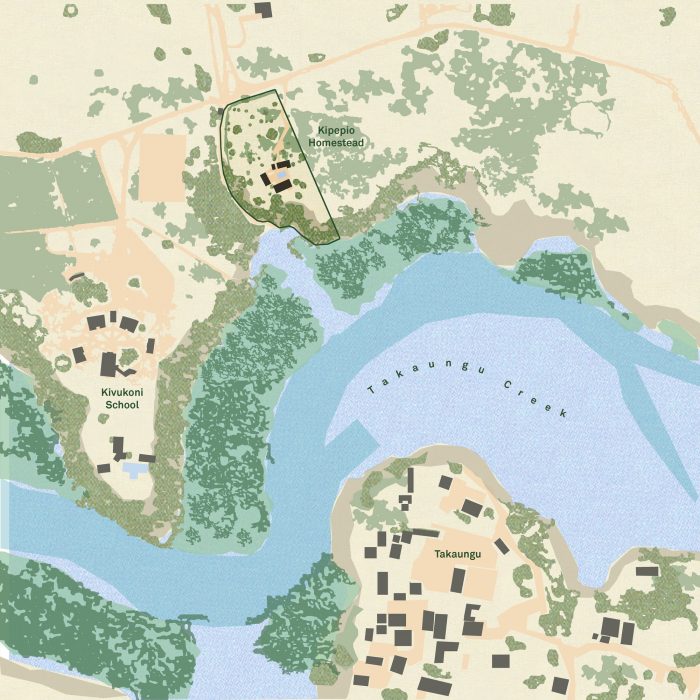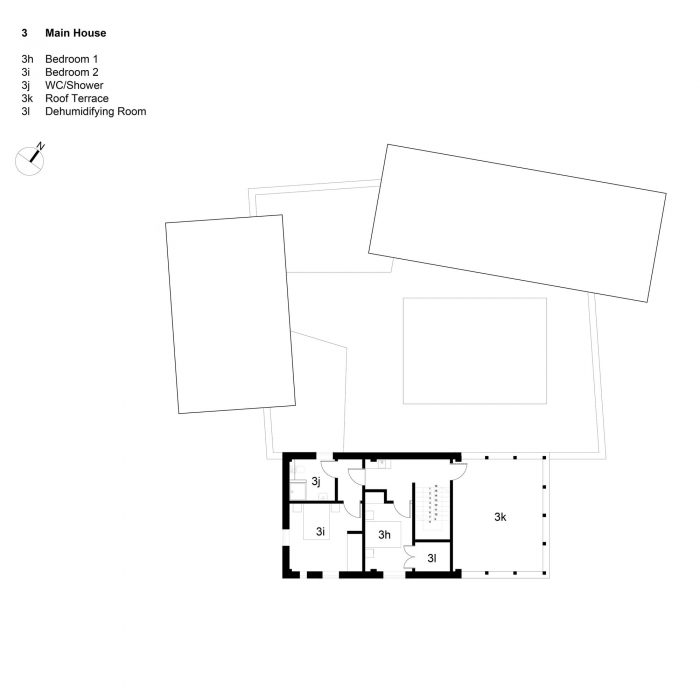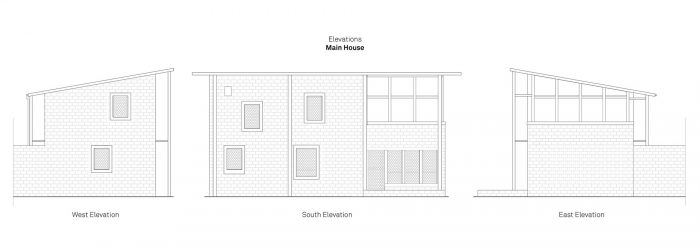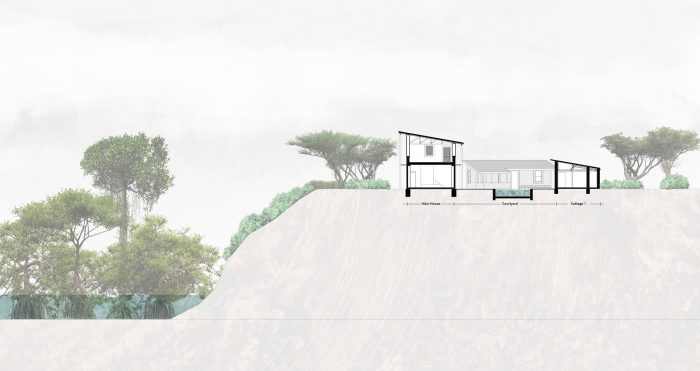这座房子位于肯尼亚Takaungu溪边的珊瑚悬崖和红树林之上。
The house is located above a coral cliff and mangrove trees facing Takaungu Creek in Kenya.
Riads(内部庭院花园)在斯瓦希里族的沿海建筑中很常见,这个项目也参考了这一点,将建筑安排在一个受保护的庭院周围,为一栋两层的主房和两栋单层的小屋创造一个非正式的家庭环境。
Riads (interior courtyard gardens) are common in vernacular Swahili coastal buildings and this is referenced in this project by arranging the buildings around a protected courtyard to create an informal domestic setting for a main two-story house and two single-story cottages.
采用当地材料和乡土建筑技术,在内部和外部都采用无面的珊瑚块,使建筑忠实于当地村庄房屋的简洁性。传统建筑材料和方法的调色板被重新安排;一击即中的珊瑚块被用于自然通风、安全和斑驳的光线;用珊瑚粉着色的地板砂浆在baraza(传统的斯瓦希里长椅)、楼梯、厨房工作台和工作台支撑结构上垂直和水平地延续。在当地房屋中广泛使用的钢制窗户安全栅被重新诠释,使用传统的金属加工技术来创造一个装饰屏;项目外部和内部使用的抹灰窗户拱廊参考了当地村庄的乡土语言,黑色的染色天花板盖条参考了斯瓦希里传统的黑色红树林杆,用于支撑白色的油漆天花板。
Employing local materials and vernacular building techniques, the un-faced coral block both internally and externally results in a building faithful to the simplicity of the local village houses. The palette of traditional building materials and methods has been rearranged; the hit-and-miss coral block is used for natural ventilation, security, and dappled light; the floor screed, pigmented with coral dust, continues vertically and horizontally on the baraza (traditional Swahili benches), the staircase, the kitchen worktop, and the worktop support structure; steel window security bars used extensively in local houses have been re-interpreted using a traditional metalwork technique to create a decorative screen; plastered window architraves used both externally and internally on the project reference the vernacular language of the local village, and black stained ceiling cover strips reference traditional Swahili black mangrove poles used to support white painted ceilings.
未抹灰的内部珊瑚砖墙通常用在功利性建筑上,因为它们易碎。解决这个问题的方法是在裸露的珊瑚上喷洒消石灰,通过加速最近切割的珊瑚表面的碳化来加强珊瑚,从而降低其易碎性。
Unplastered internal coral block walls are normally used on utilitarian buildings as they are friable. This problem was overcome by spraying the exposed coral with slaked lime to strengthen the coral by accelerating the carbonation of the recently cut coral face, thereby reducing its friability.
这里有三个重点生活空间,取决于一天中的时间、月份和气候。有顶棚的露台、院子里的 “巴拉扎 “和主要的生活/用餐空间一起工作,为家园的居民提供各种公共空间和景观。
景观对建筑来说是必不可少的,随着每个季节的到来,房子变得更加融入其成熟和不断发展的环境中。
There are three focal living spaces, dependent on the time of day, month, and climate. The covered roof terrace, courtyard “baraza” and the main living/dining space work together to provide a variety of communal spaces and views to the inhabitants of the homestead.
The landscape is essential to the architecture, and with every season the house becomes more integrated into its maturing and evolving environment.
房子周围的土地以前是用剑麻种植的,现在已经被移除。现在,当地的树木、灌木、野花和草正在建立。 土著种植是专门为传统民族植物学的草药用途而选择的,用来喂养野生动物,并作为蝴蝶和蛾子繁殖的宿主植物。
The land around the house was previously cultivated with sisal that has now been removed. Now, indigenous trees, shrubs, wildflowers, and grasses are being established. The indigenous planting has been specifically chosen for traditional ethnobotanical herbal uses, to feed wildlife, and as host plants for butterfly and moth breeding.
土著景观不需要灌溉,此外,通过重新建立土著沿海森林,生活在家园里已经成为一种不断发展的乐趣。首先是声音:鸟儿、猴子和galagos(丛林婴儿)的嘈杂声,与对面村子里的伊斯兰教祈祷者的定期朗诵声融为一体。其次,花园里不断有蝴蝶飞来飞去,有美丽的鸟群,有猴子,有在海风中摇摆的草,还有潮汐小河的景色。
Indigenous landscaping does not require irrigating, and furthermore, by re-establishing the indigenous coastal forest, living in the homestead has become an evolving delight. Firstly, there are the sounds: a cacophony of birds, monkeys, and galagos (bush babies), blending in with the regular recitals of the muezzin adhan from the village opposite. Secondly, the landscape garden is animated by a constant flurry of butterflies, flocks of beautiful birds, monkeys, grasses waving in the sea breeze, and views over the tidal creek.
Architects: Cottrell & Vermeulen Architecture
Area : 280 m²
Year : 2019
Photographs :Norbert Rottcher, Anthony Coleman
Manufacturers : Seedling Designs
Structural Engineer : Coast Engineering Consultants
Project Director : Brian Vermeulen
Project Architect : Paul Taylor
Landscape : Brian Vermeulen
Contractor : Sundial Services – Martin Katana
Furniture Design : Cottrell & Vermeulen
Furniture Manufacture : Karisa Kahandi
Collaborator : Coast Engineering Consultants
Country : Kenya

